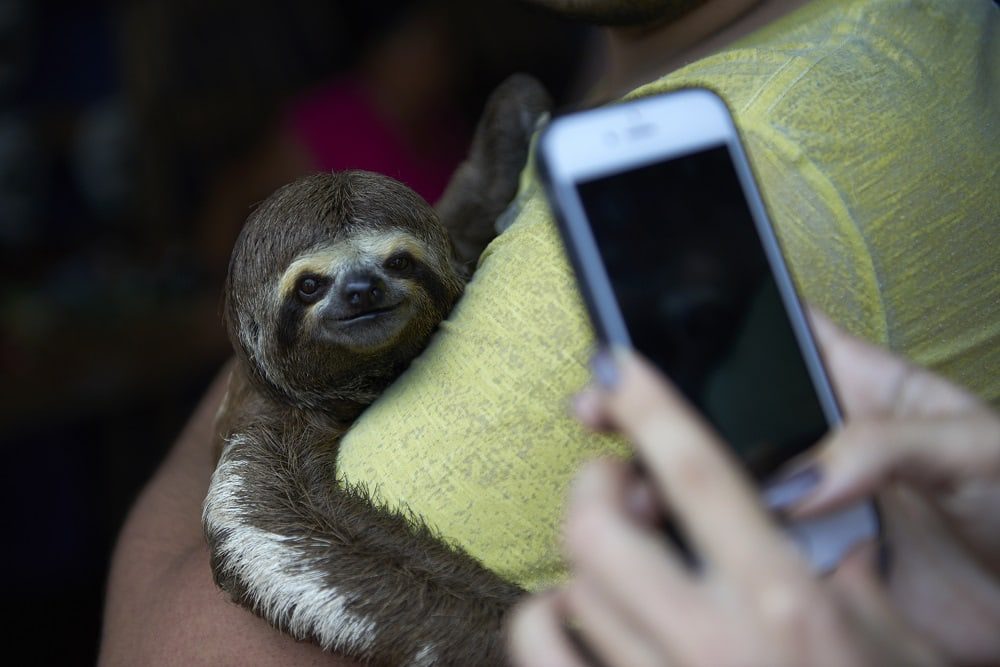Wild animals are bearing the brunt of an explosive rise in the popularity of animal selfies among travellers, with the issue particularly problematic right here in Australia.
Since 2014, there has been a 292% rise in the number of wildlife selfies posted on social sharing platform Instagram, according to World Animal Protection (WAP).
Of those, two in five were considered “bad”, with someone inappropriately interacting with a wild animal.
Australia has the highest concentration of wildlife selfies, accounting for 35% of the global total.
“The wildlife selfie craze is a worldwide phenomenon fuelled by tourists, many of whom are unaware of the cruel conditions and terrible treatment wild animals endure,” WAP senior campaign manager Ben Pearson said.
“Behind the scenes wild animals are being taken from their mothers as babies and kept in filthy, cramped conditions or repeatedly baited with food causing severe psychological trauma.
“If you can ride, hug or have a selfie with a wild animal, chances are it is cruel and the animal is suffering.”
As a result, the organisation has called on Instagram to take action.
“Instagram does not currently include any animal cruelty or welfare language in their community guidelines,” it said.
“We believe it’s time for that to change.”
The platform responded by saying it prohibited the use of the platform to “facilitate or organise criminal activity that causes physical harm to animals,” the BBC reported.
“We remove reported content that promotes poaching of endangered species or the sale of animals for organised fight, and that includes acts of animal abuse.”
It is currently in talks with wildlife experts to better educate its “community”about activities that can be harmful to animals and nature, it revealed.
Furthermore, new research by WAP revealed that some of the most iconic animals in the Amazon are being placed under immense pressure by the rise of wildlife selfies.
These include sloths, anacondas, toucans and Caiman crocodiles – just some of the animals snatched from the wild – often illegally – and used by irresponsible tour operators to entertain tourists.
WAP’s global wildlife advisor Dr Neil D’Cruze described the findings as “extremely distressing”.
“The reality is these unfortunate animals are suffering terribly, both in front of and behind the camera,” he said.
“The growing demand for harmful wildlife selfies is not only a serious animal welfare concern but also a conservation concern – our online review of this kind of practice in Latin America found that more than 20% of the species involved are threatened by extinction and more than 60% are protected by international law.”
The organisation has called on relevant governments to ensure the travel operators responsible abide by the existing laws.
In addition, it will launch a Wildlife Selfie Code for tourists so that they take photos of wildlife that don’t cause harm.




